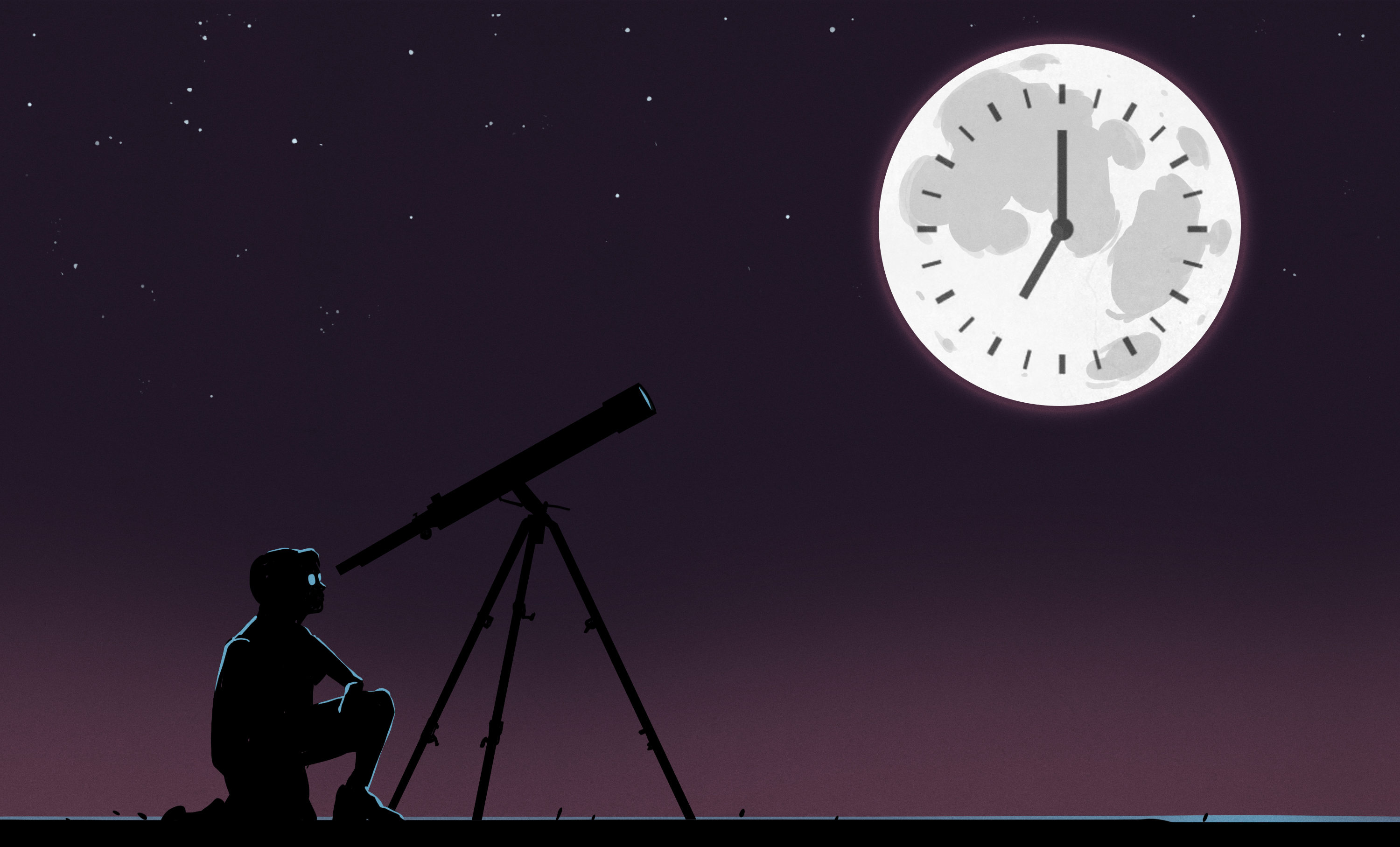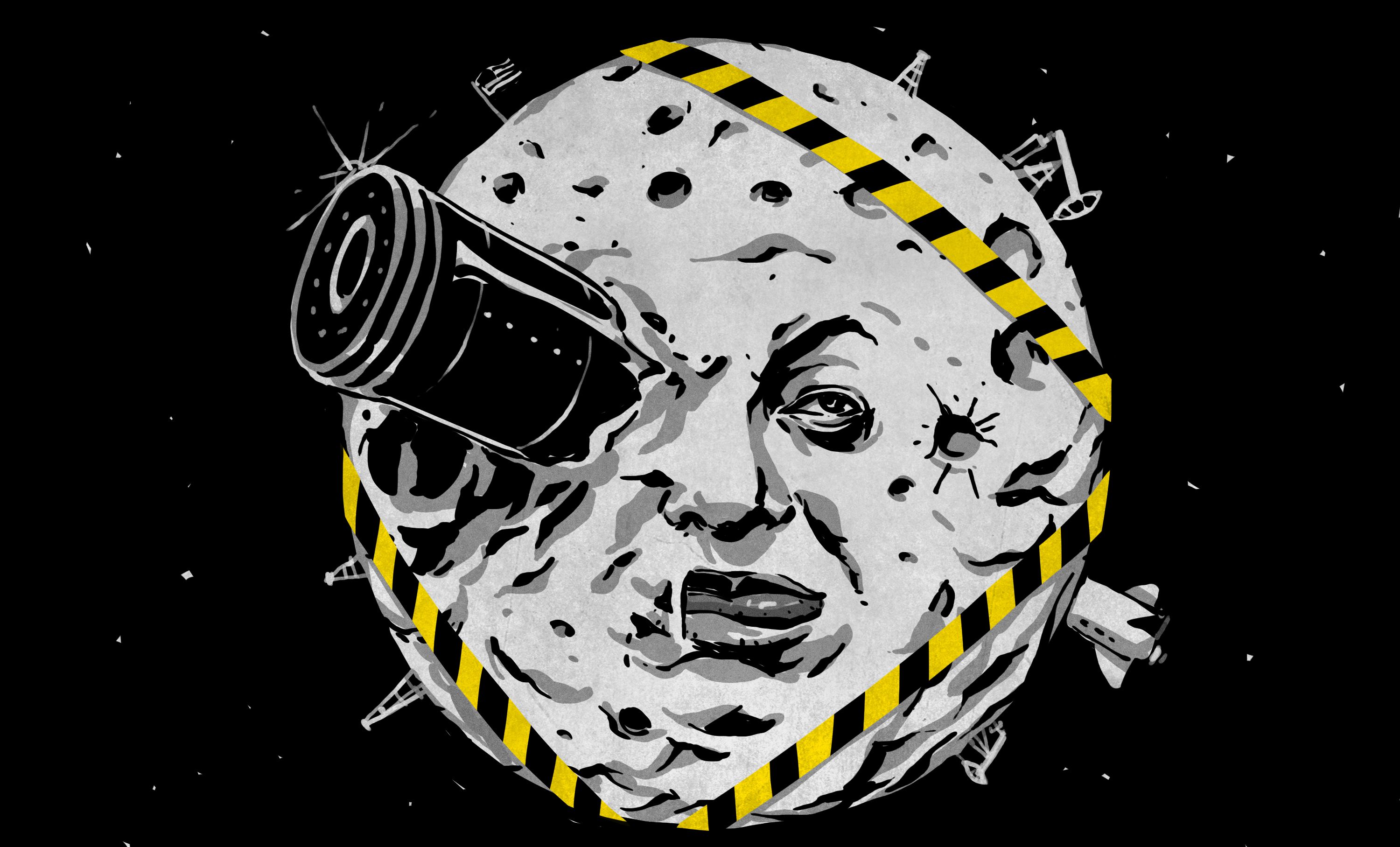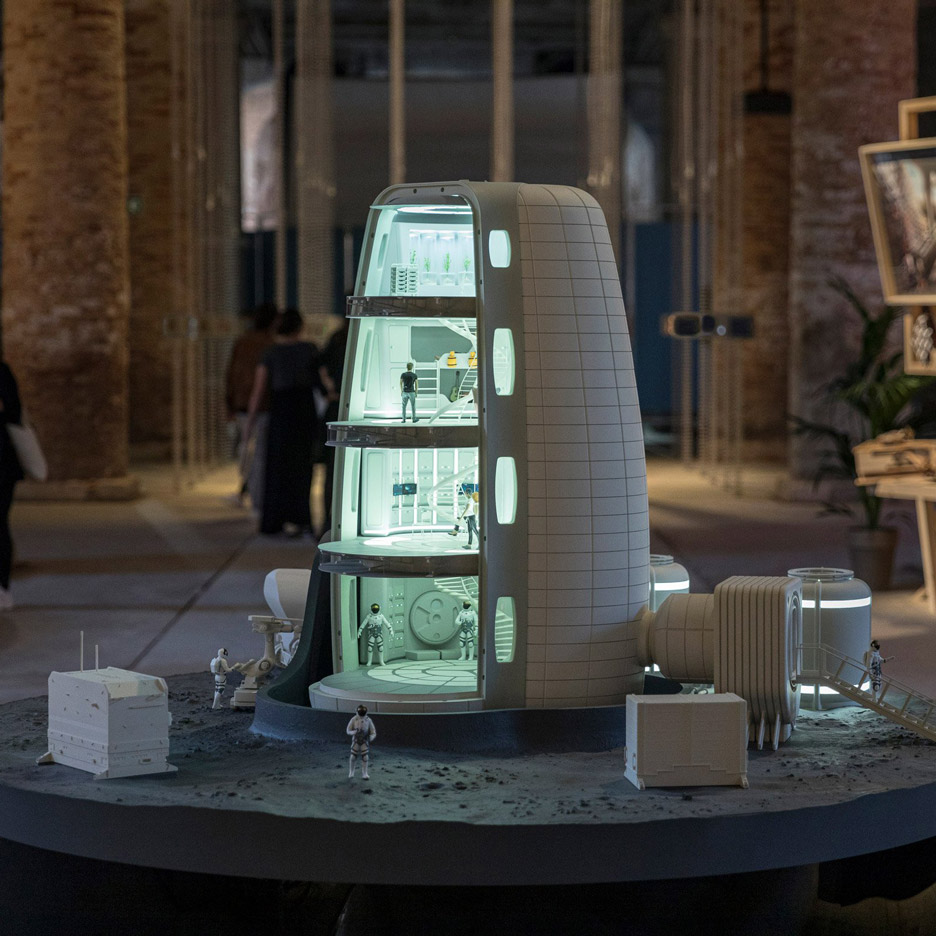One person like that
#themoon
2 Likes
2 Comments
2 Likes
Moon Salad! ABC
"The goal is to be able to grow plants on the lunar surface within four years, which they hope will in turn allow for the development of food, medicine and oxygen in the hostile environment."
#plants #oz #TheMoon #hoticulture #Resurrection-grass #adaptation
3 Likes
9 Comments
1 Shares
SOM's inflatable habitats could allow people to "thrive over the long term" on the Moon

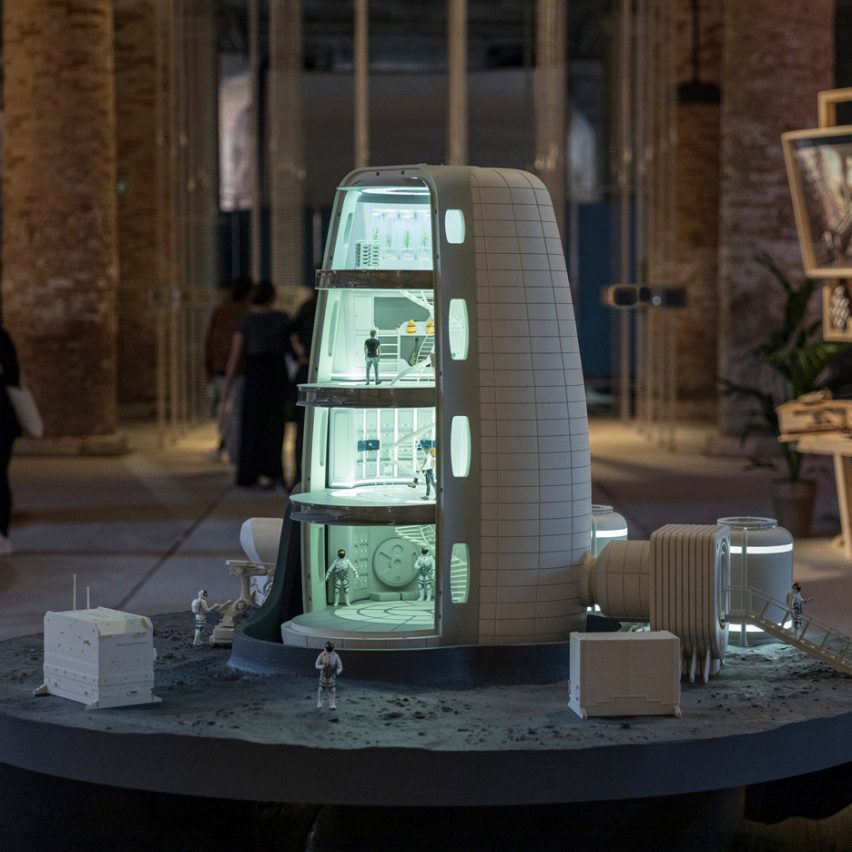
Architecture studio SOM and the European Space Agency have created more visuals for Moon Village, a concept for a settlement on the moon made up of inflatable modules.
SOM presented a detailed scale model of Moon Village, which it first announced in 2019, as part of its exhibition Life Beyond Earth at this year's Venice Architecture Biennale.
The proposal is for a collection of individual four-level units located in the moon's south polar region that would provide hubs for scientific research.
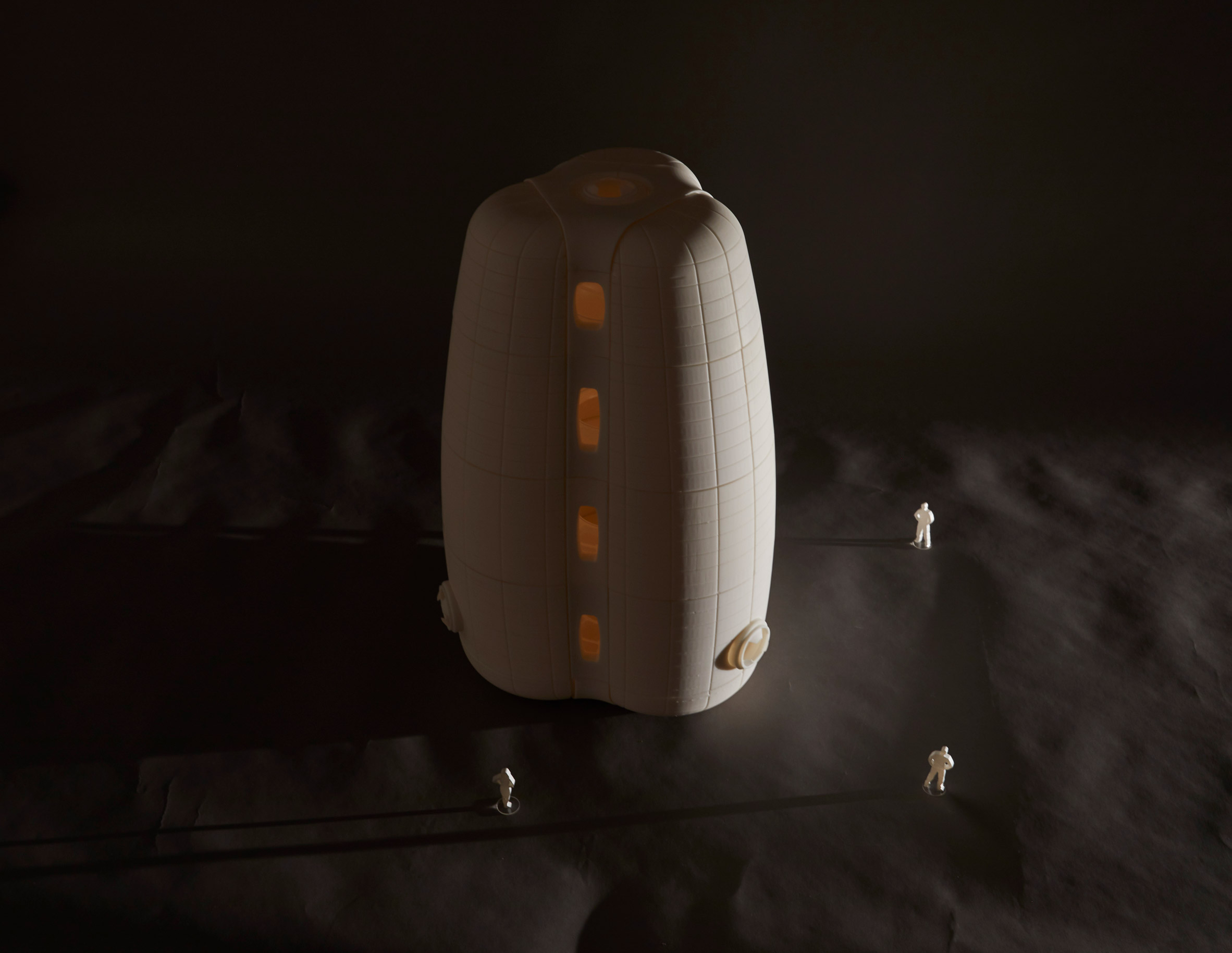 The units are designed to be inflatable
The units are designed to be inflatable
SOM said that Moon Village could grow over time, evolving from a settlement for research into thriving communities offering wider opportunities such as tourism.
"For SOM, designing a Moon Village meant creating an environment in which humans will be able to thrive over the long term," senior designer Daniel Inocente told Dezeen.
"This is human-centric design."
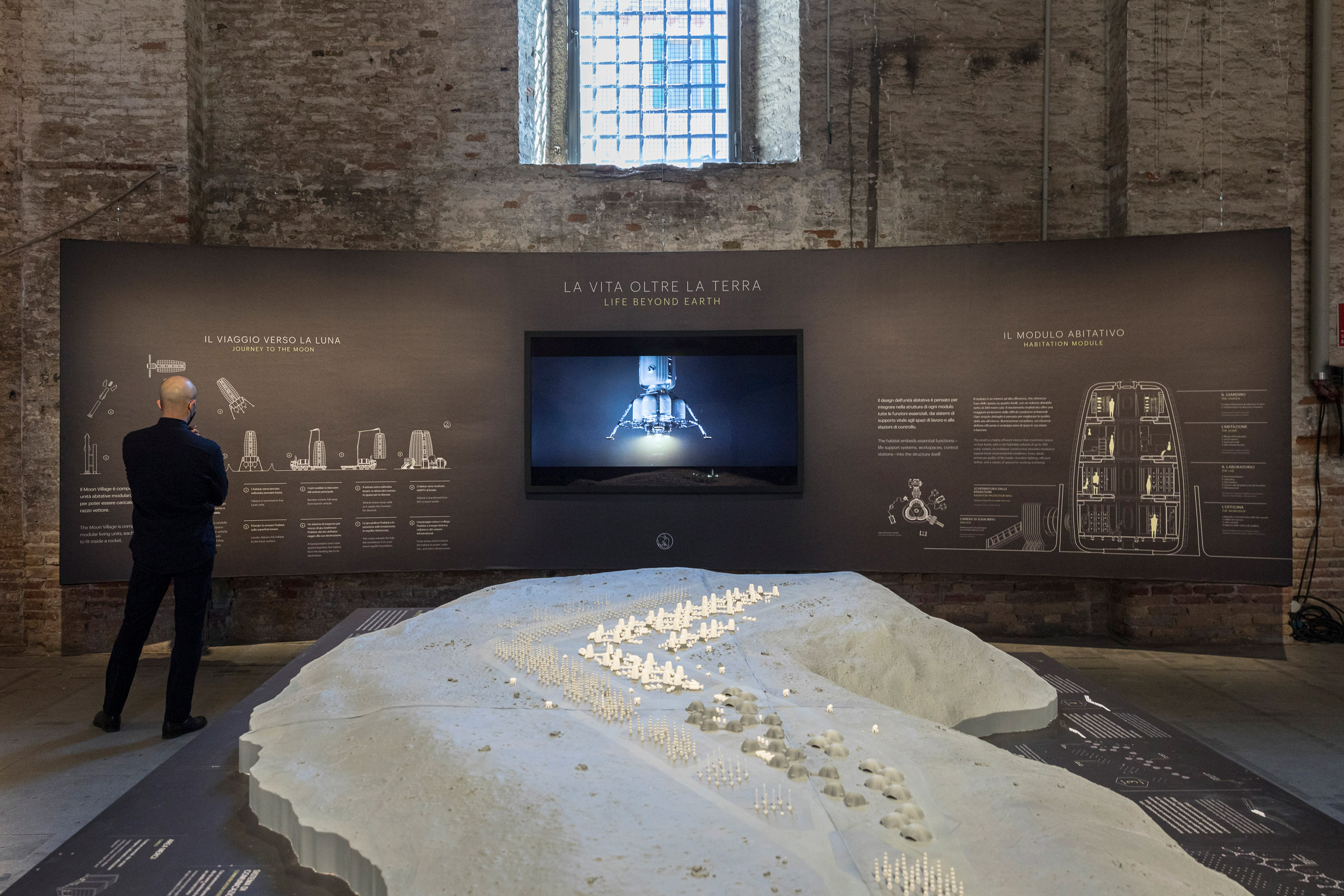 Life Beyond Earth is on show at the Venice Architecture Biennale
Life Beyond Earth is on show at the Venice Architecture Biennale
The modules are designed to be inflatable so that they could be compressed and transported to the moon by rocket, where they would be expanded to full size.
Each of the units would be built around a hybrid structural design that would include a rigid titanium alloy perimeter frame and a soft structural shell.
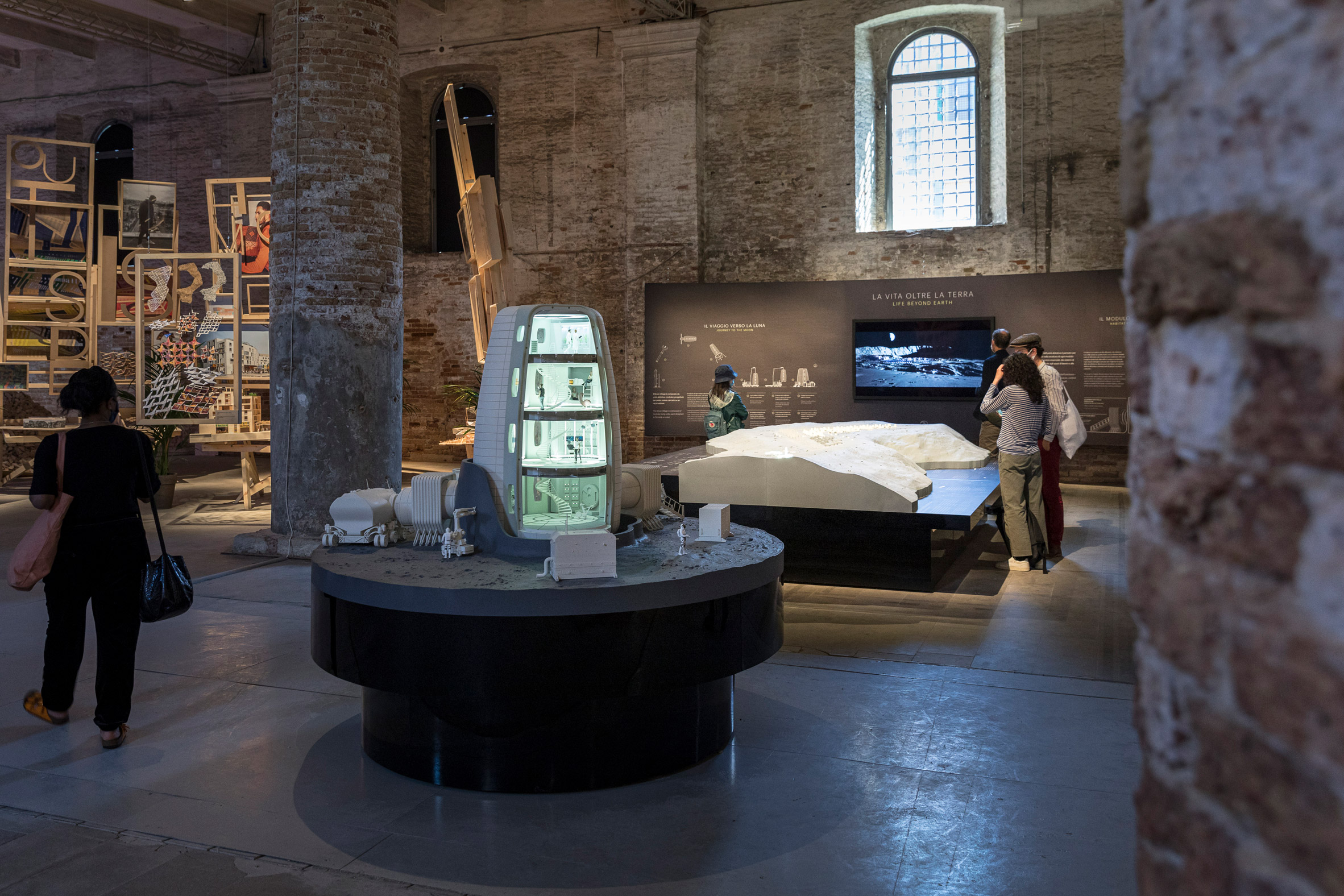 A scale model and site plan are included in the installation
A scale model and site plan are included in the installation
This shell would feature a layer to protect from micrometeorites and a layer made of open-foam polyurethane and double-aluminised Mylar for insulation.
"Unlike other inflatable designs, which place structural mechanical systems at their centre, this solution creates an open interior that allows for optimised environmental conditions, air distribution and recycling, as well as visibility, efficiency and mobility," said SOM associate director Georgi Petrov.
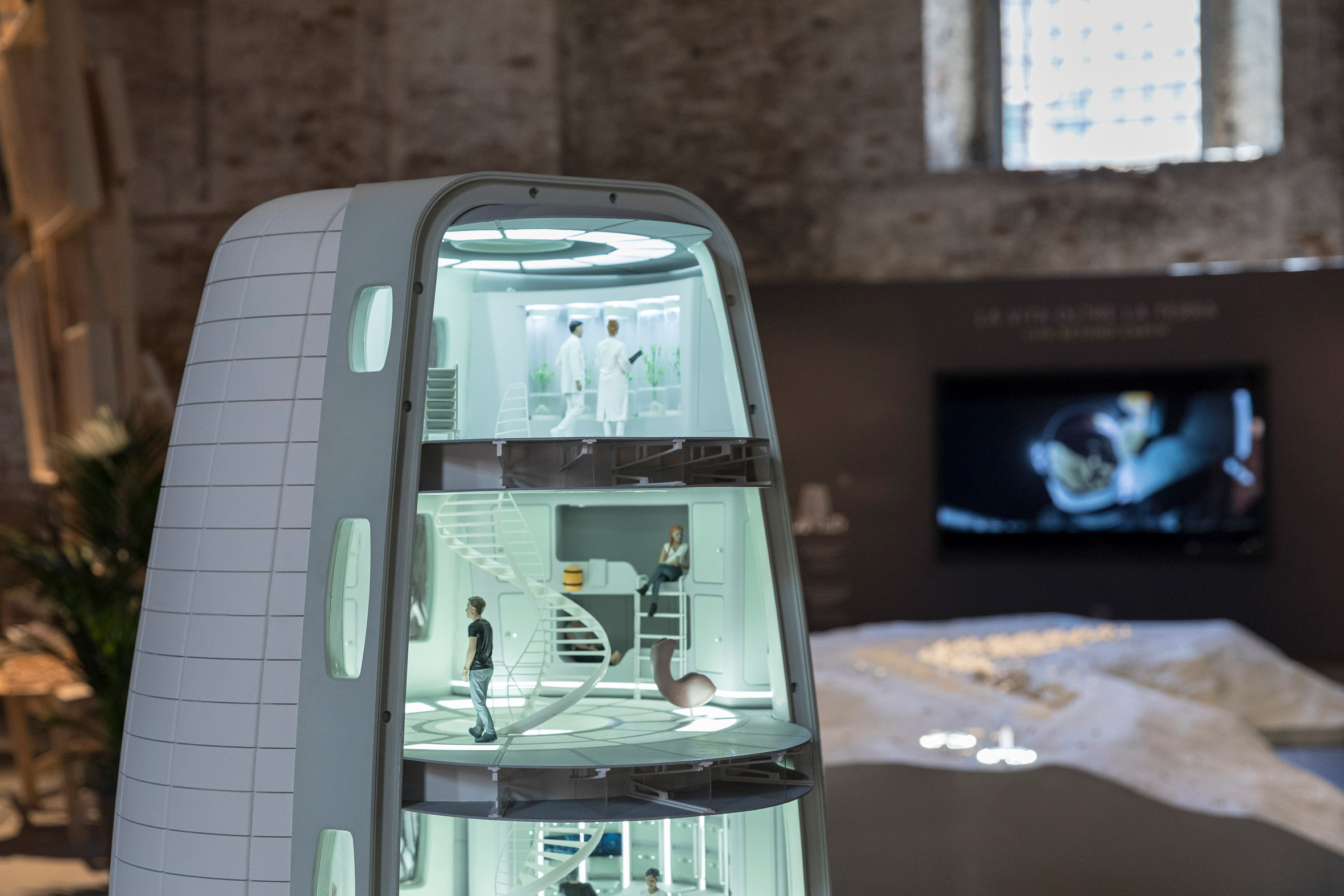 The units would have four levels
The units would have four levels
The habitats would be located in the south polar region because it gets a lot of daylight throughout the lunar year, which would allow the units to harness sunlight for energy.
"Its location was also chosen in part to enable access to undisturbed material from the early history of the Solar System," SOM design partner Colin Koop told Dezeen.
"Material that will help scientists better understand the formation of our world."
Life Beyond Earth includes a scale model for an individual inflatable unit, as well as a site model showing a collection of units that would make up the village.
The installation addresses the biennale's theme for this year that looks towards the future and asks, "How will we live together?"
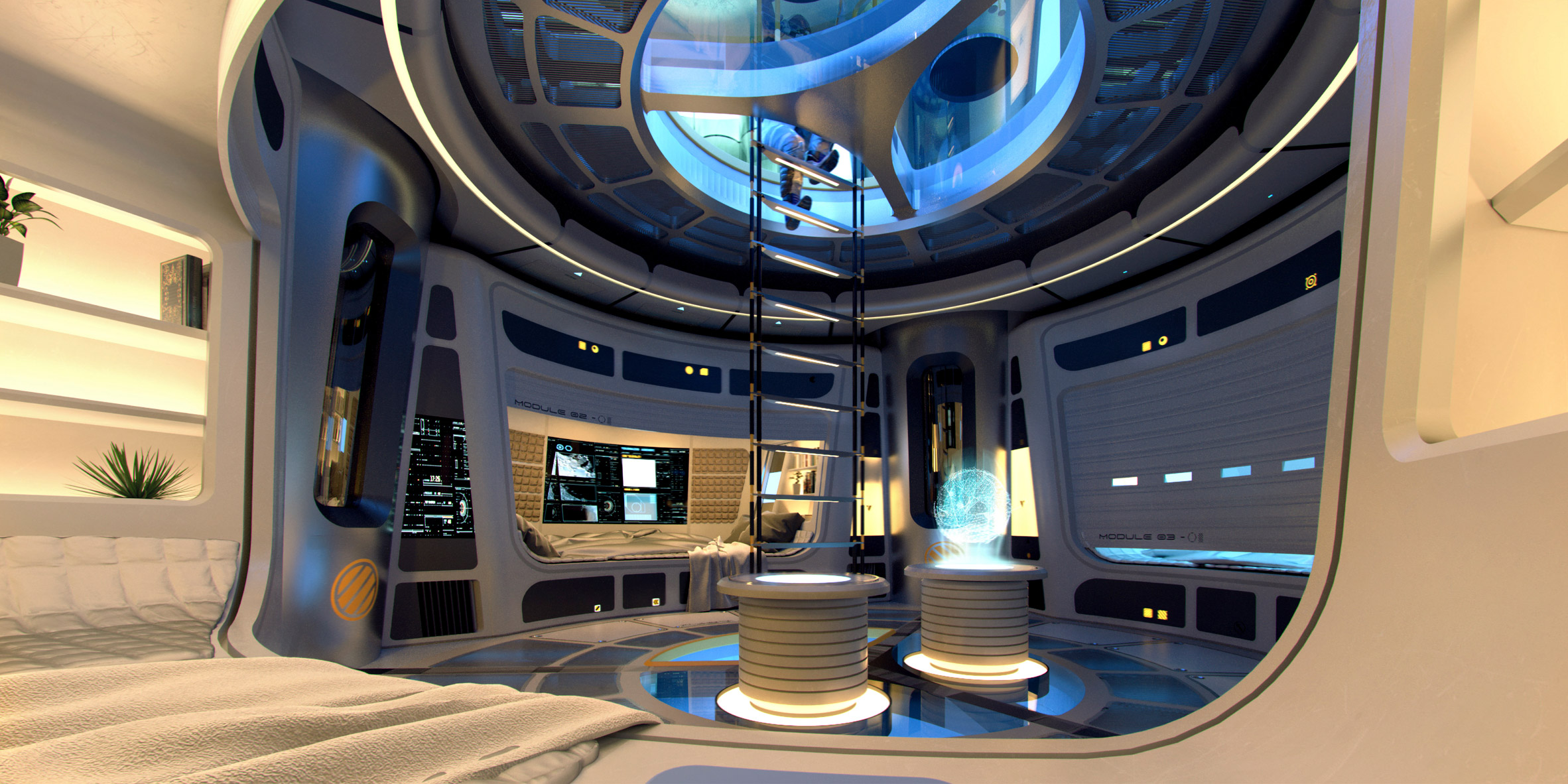 An interior view of an inflatable unit
An interior view of an inflatable unit
The project was informed by European Space Agency director-general Jan Wörner's concept of a Moon Village, an international community he defines as one whose members could live and work alongside each other in space.
As a lunar settlement, Moon Village is intended to encourage collaboration between countries and communities rather than competition.
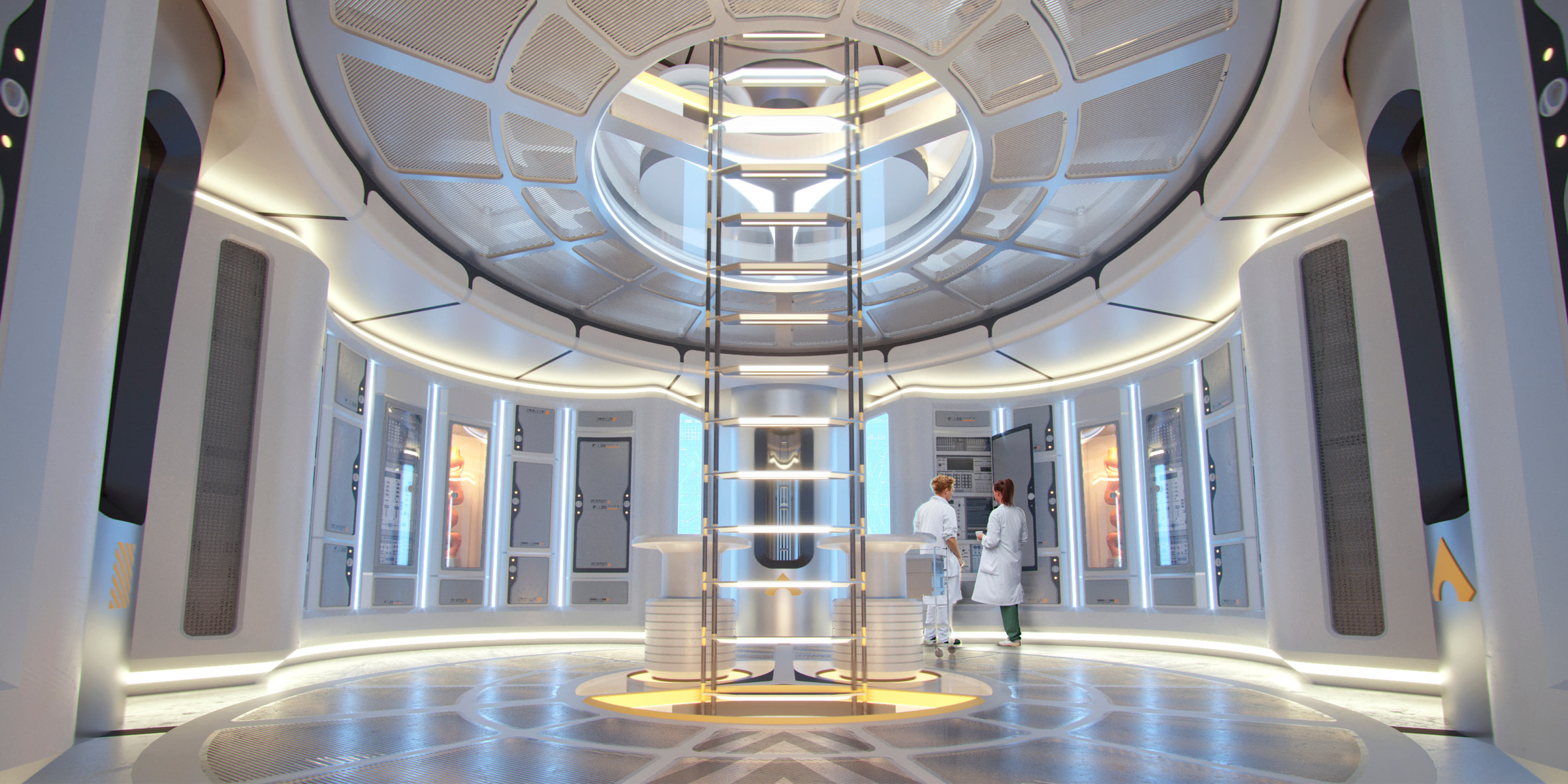 The modules are intended initially for scientific research
The modules are intended initially for scientific research
Koop explained that while there is no definitive timeline for the project, it is designed to be realised with existing technologies and those emerging in the near future.
"Just as innovation from the mid-century space race brought us beneficial technology that we otherwise would not have, the Moon Village will enable the research and innovation that will help solve pressing problems here on Earth."
As well as providing a liveable habitat in space, Koop suggested that the project would offer insight into how we might build more adaptable settlements on Earth in the future.
"Designing a self-sustaining settlement on the moon in such a hostile environment will teach us invaluable lessons about sustainable and resilient design," said Koop.
"It will help us prepare for a changing climate and pioneer new methods of building for a variety of environments."
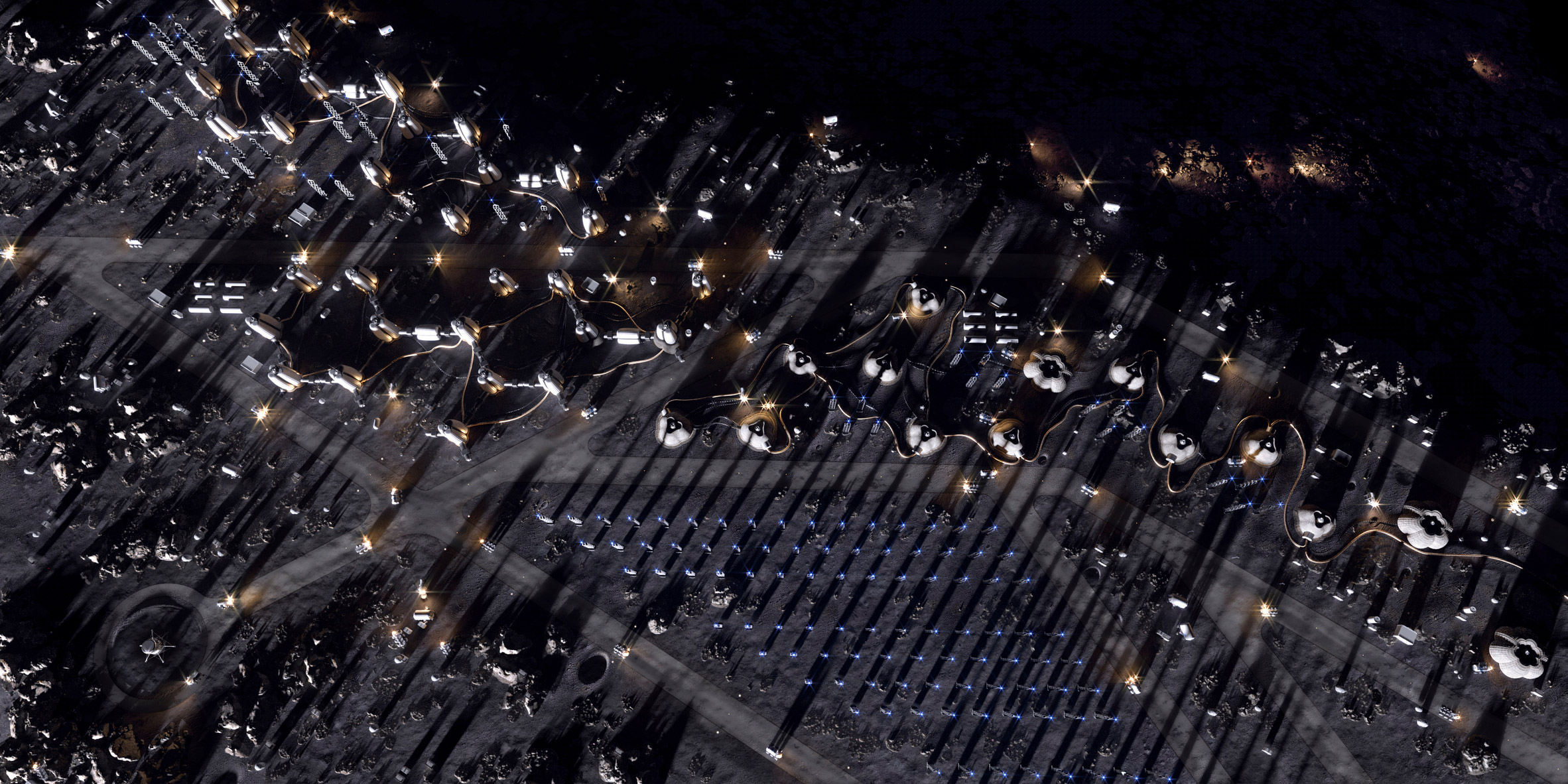 A community of units forming a lunar village
A community of units forming a lunar village
SOM, or Skidmore, Owings & Merill, is a global architecture, engineering and urban planning firm headquartered in Chicago and founded in 1963.
Formed in 1975, The European Space Agency is an intergovernmental organisation dedicated to space exploration.
Other recent designs for the moon include a similarly expandable and self-sustainable lunar habitat by a startup called Instarz and a human lander designed by Elon Musk for a 2024 mission scheduled to carry the first woman to the moon.
All the images are courtesy of SOM.
The post SOM's inflatable habitats could allow people to "thrive over the long term" on the Moon appeared first on Dezeen.
#all #architecture #inflatables #space #skidmoreowingsmerrill #themoon #nasa #inflatablearchitecture #venicearchitecturebiennale
